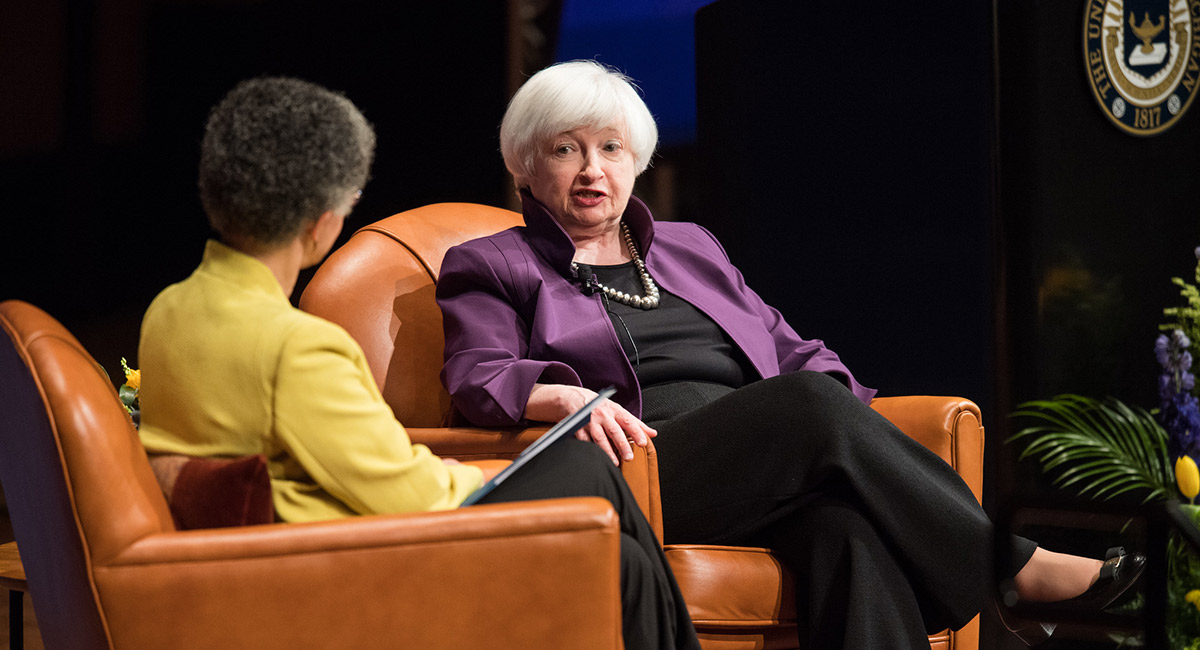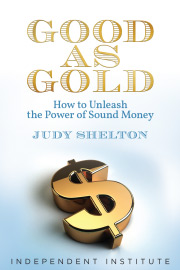The next time you hear a Federal Reserve official intone about the central bank’s commitment to “price stability,” you might take a moment to reflect on how that goal came to be defined as 2% inflation.
The 2% number is so ingrained that our monetary policymakers routinely get away with issuing post-meeting press releases, as the Fed did on Wednesday, that include vacuous terminology about aiming to achieve inflation that “moderately” exceeds 2% for “some” time. Since the Fed has been unable to bring inflation up to its 2% objective for years, the ostensible reasoning goes, there is now room to exceed that number—just don’t ask by how much or for how long.
Why, though, do we accept a definition of “price stability” that amounts to deliberate reduction of the purchasing power of our nation’s monetary unit of account? For anyone inclined to save their dollars for future use, the programmed annual diminution of the dollar as a store of value constitutes an expropriation of wealth by a government agency.
Turns out, a lively debate on this matter did take place in the boardroom of the Federal Reserve some 25 years ago. Alan Greenspan was chairman at the time; Janet Yellen was a Fed governor; and Jerry Jordan was president of the Cleveland Fed.
The transcript of that July 1996 meeting of monetary authorities makes for remarkable reading—especially given today’s concern about inflation as a risk to productive economic growth.
“When we talk about price stability as a goal, setting aside the measurement problem,” Mr. Greenspan opens the discussion, “are we talking about price stability or are we talking about zero inflation?”
Ms. Yellen proceeds to make the scholarly case for 2 % inflation as the preferred target based on what she describes as a “greasing-the-wheels” argument. Citing an academic paper co-authored by her husband, well-known economist George Akerlof, Ms. Yellen suggests that “a little inflation lowers unemployment by facilitating adjustments in relative pay in a world where individuals deeply dislike nominal pay cuts.”
The theory assumes that workers resist, and firms are unwilling to impose, nominal pay cuts even when firms are experiencing losses—an assertion that aligns with Keynesian notions about “sticky wages” despite an economic downturn. Under such conditions, inflation can provide the cover for achieving real wage cuts without imposing the psychological blow of reducing nominal pay; that is, if inflation were 6%, a firm could increase the nominal amount it pays workers by 5% to achieve a real wage cut of 1%. Were there zero inflation, the firm would have to cut nominal pay by 1% to achieve the same real wage cut.
“I think we are dealing here with a very deep-rooted property of the human psyche,” Ms. Yellen noted. She proceeded to tell Mr. Greenspan and her colleagues around the table about a survey posed to a random sample of Americans by Yale economist Robert Shiller to measure their aversion to inflation.
The survey asked respondents whether they agreed with the statement: “I think that if my pay went up, I would feel more satisfaction in my job, more sense of fulfillment, even if prices went up just as much.” Ms. Yellen reported that 28 % fully agreed and another 21% partially agreed. “Only 27 percent completely disagreed,” she observed, “although I think it will comfort you to learn that in a special subsample of economists, not one single economist Shiller polled fully agreed and 78% completely disagreed.”
The transcript notes parenthetically that this last aside prompted laughter in the Fed boardroom. Get it? Economists don’t fall for that inflation ruse—only ignorant workers.
Based on his own subsequent remarks, I would guess that Mr. Jordan was likely not among those chuckling.
“If I were going to do surveys about wage cuts or increases of the sort that Janet reported on, one of the surveys I would want to conduct is to ask people as we approach the end of this century to choose between two things. If the central bank had an objective of reducing the purchasing power of the dollar to 13 cents or seven cents over the next century, which would you prefer?”
Mr. Jordan continued: “I would expect the majority of the responses to be, why are you going to reduce it at all? Explain to me why the dollar is not going to purchase the same at the end of the next century as it does today. The difference between 13 cents and 7 cents is the difference between a 2 percent rate of inflation and a 3 percent rate of inflation over 100 years. I think most people would view that as a silly alternative. They would say, why not zero inflation.”
It’s evident who won the fateful debate that day. The rest of us have been losing ever since.









